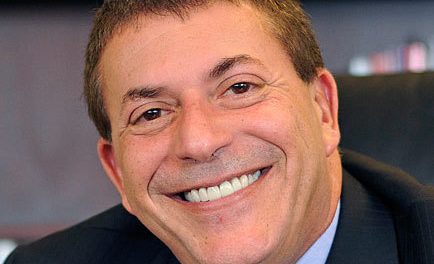By Dr. Stanley Riggs
Are you ready to start building wealth, rather than just making a living? If you already have a good income, are you ready to get off the high income/no net worth treadmill and start down the road to financial freedom? No matter what financial circumstance you find yourself in, here’s how to achieve it:
Your Prerequisites:
A mentor in the family, in the neighborhood, in the school, in the public eye or in books who can serve as a role model to emulate.
A marketable skill. A skill that can earn money will become gainful employment. A skill that does not earn money will just become a hobby.
Delayed gratification priorities. A dollar invested instead of spent today will be many more dollars available to spend in the future.
The Basic Tools You Will Need:
Real assets and true liabilities: Understand the difference between real assets and true liabilities. An asset, such as a dividend paying stock, interest paying bond or income producing real estate will put money into your pocket. A liability, such as a large credit card balance, an expensive car or a large boat will take money out of your pocket. Your hard earned money should be working to take you towards financial freedom and not towards increasing your income requirements.
Demographic changes: Understand and anticipate the social and economic changes associated with the coming demographic changes. Demography is the statistical data of a population. Spending habits are closely related to age and group spending determines the direction of the economy. The wave of high-spending 45-54 year old Baby Boomers is rapidly diminishing and the following Millennial Generation has a very different set of values that will dictate new spending habits. Demography really is destiny.
Economic cycles: Always know where you are in the economic cycle. Financial opportunities are always recurring and are always present somewhere. There are over a dozen named, popular economic cycle theories. Check the internet for websites that illustrate the Yield Curve, the Index of Leading Economic Indicators, the Institute of Supply Management Index (ISM) and the Chicago Board of Options Exchange Market Volatility Index (VIX) to see where you are in the financial cycle.
Determining the actual inflection points of the peak or trough is nearly impossible. You only need to know which side of the curve (rising or falling) you are on, which inflection point is coming up next and approximately how far you are from that inflection point. Invest proactively, not reactively, to the inevitable, cyclical economic changes.
You cannot apply linear concepts to non-linear situations. Linear thought can only lead to fallacious extrapolation and the belief that the good times will never end and the bad times will never stop. The four words that have cost many investors their fortunes are: “It’s different this time.” One of the greatest of all time hockey players, Wayne Gretzky explained his success: “I skated to where the puck was going, not to where it was.” Invest to where the economy is going tomorrow, not to where it is today.
Know These Critical Distinctions:
Good debt vs. bad debt: Bad debt is debt that requires you to use your own work, time and effort to pay off and after 10-20 years you are left holding something with little or no value. Examples of bad debt are unnecessary consumer credit card debt, expensive cars, big recreational vehicles (RVs) and large boats; all purchased with borrowed (somebody else’s) money.
Good debt is debt structured so someone else uses their work, time and effort to pay it off for you and they ultimately leave you with something having more value than what you started with. With income-producing real estate, such as affordable rental homes, your tenant will work more than a week each month to pay your mortgage, pay your property taxes and pay your insurance. After 20 years, they will leave you with a debt-free, income-producing asset to fund your retirement.
Rich vs. wealthy: Rich is a high income/high expense lifestyle. Rich is usually also a high income/no net worth treadmill that some people are on until the day they die. Wealth is a measure of both time and money. It is how long you can live the lifestyle of your choosing supported solely by your investment income. Wealth is true financial freedom and it does not require a high net worth to achieve.
Consider a Financial Advisor:
Your efforts should be guided by a qualified accountant, tax attorney, estate planner and financial advisor. Remember, it is always best to obtain advice from someone who has already accomplished what you are trying to achieve. Do not expect someone to be able to guide you up the “net worth mountain” if they have not been able to do it for themselves. Always get your financial advice from those higher on the financial food chain.
The (Your Name Here) Economy:
Remember, it is your own economy, the [Your Name Here] Economy that affects you the most. You can only balance your own checkbook, service your own debt and build your own wealth.
The Take Away: Yes, you really do have the potential to truly build wealth using the basic tools of putting your hard earned money into assets instead of liabilities, being aware of the implications of the coming demographic changes and always knowing where you are on the economic cycle.
Dr. Stanley Riggs is the author of Build Wealth and Spend It All, Live the Life You Earned, which shows how almost anyone can use three basic concepts to build wealth regardless of their age. While establishing and managing his private practice, he developed and managed his own commercial real estate portfolio.
With his self-taught knowledge of real assets versus liabilities, economic cycles and demographics, Dr. Riggs was able to build successful careers in the residential, commercial, industrial and resort asset classes by staying ahead of the national economic trends. For more information, please visit, www.buildwealthandspenditall.com.








